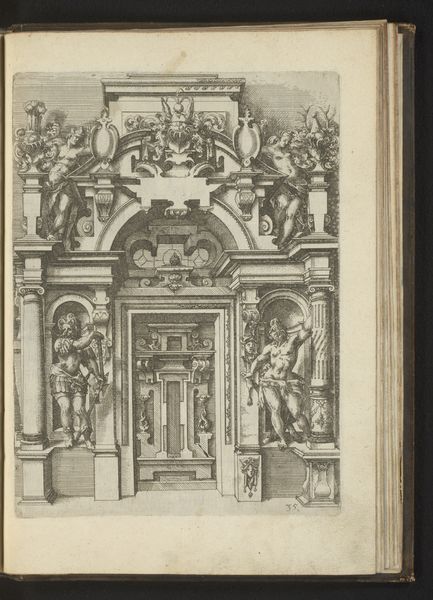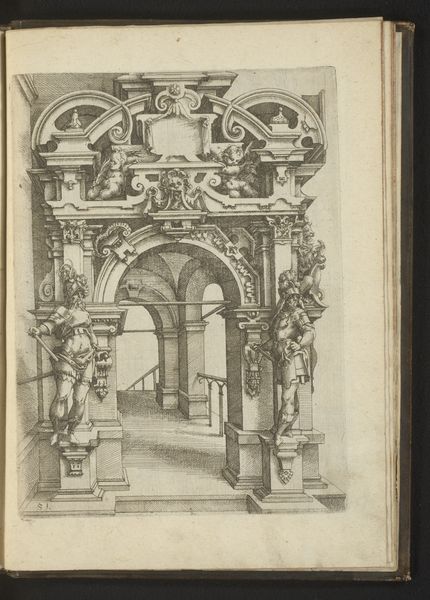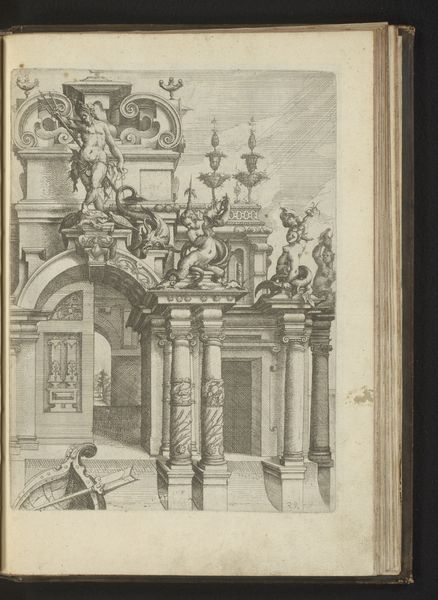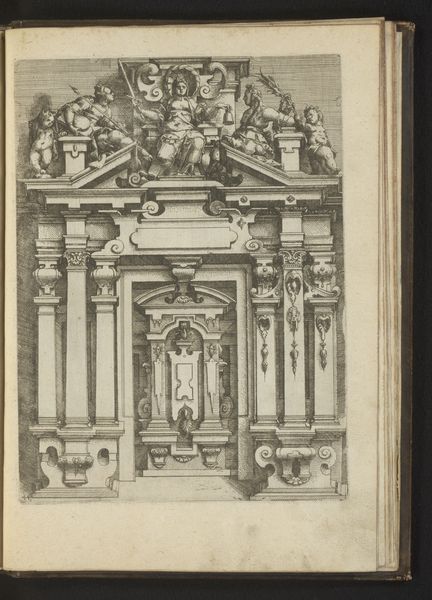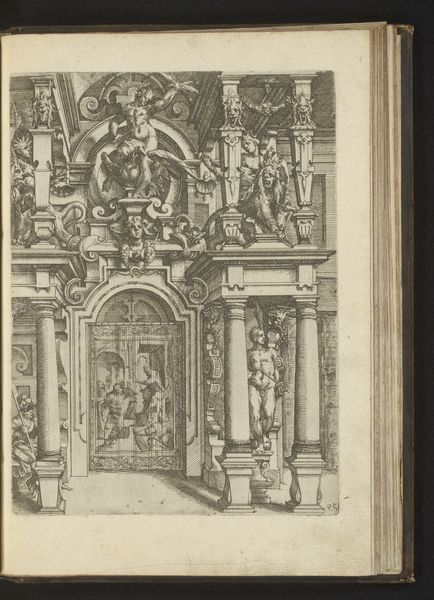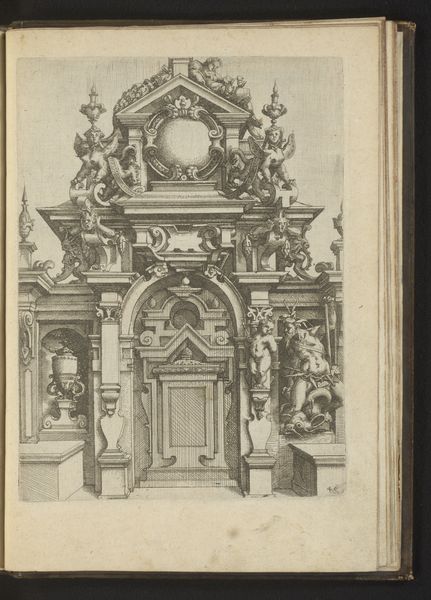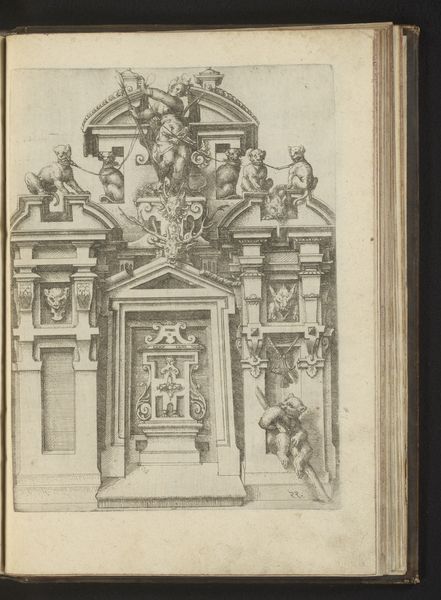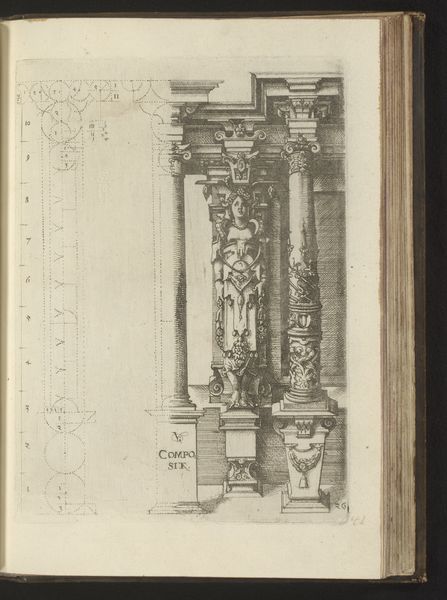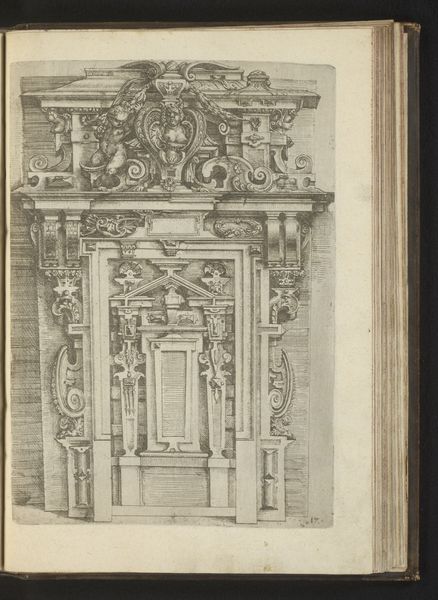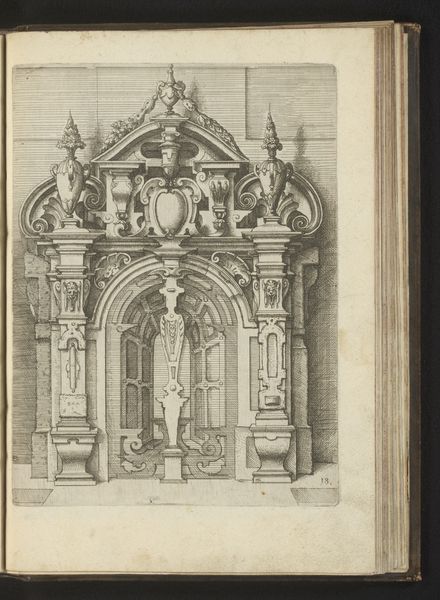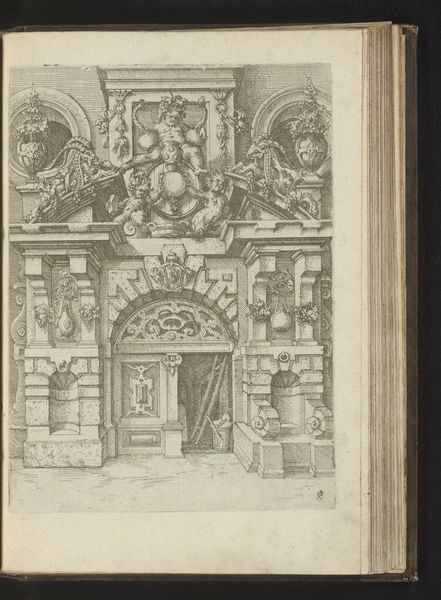
Portaal met een ruiterstandbeeld en bovenop zit Minerva met vijf musicerende vrouwen 1593 - 1595
0:00
0:00
drawing, print, metal, engraving, architecture
#
portrait
#
drawing
#
allegory
# print
#
metal
#
mannerism
#
figuration
#
11_renaissance
#
line
#
cityscape
#
history-painting
#
engraving
#
architecture
Dimensions: height 246 mm, width 186 mm
Copyright: Rijks Museum: Open Domain
Editor: This engraving, titled "Portaal met een ruiterstandbeeld en bovenop zit Minerva met vijf musicerende vrouwen", made between 1593 and 1595 by Wendel Dietterlin, shows a very elaborate architectural structure filled with figures. I'm struck by how ornate and almost theatrical it seems. What's your interpretation of this print? Curator: This engraving showcases Mannerist style, emphasizing artifice and imagination over naturalism. It’s part of a series of prints detailing fantastical architectural designs. We have to consider the socio-political context; prints like these were often created not just as art, but as aspirational displays of power and learning. This one depicts an allegorical portal, a triumphal arch maybe, celebrating civic virtue with Minerva and the Muses. It’s important to ask: for whom was Dietterlin designing? How would this imagery shape public perception? Editor: So it’s meant to communicate something beyond just aesthetics? You’re saying this kind of imagery bolstered civic virtue? Curator: Absolutely. The cityscapes alluded to in the distance, and the heroic statues combine in what could have served as propaganda; these structures served symbolic roles, projecting authority and constructing a visual language of power. How does it feel to you knowing this artwork was also designed to display power? Editor: It makes the almost overwhelming ornamentation feel more intentional. It's not just decoration, but a deliberate message about the patron's influence and sophisticated taste. It gives it all another meaning layer. Curator: Precisely. Understanding the context is key. Editor: This reframes how I look at prints from this era, thank you! Curator: Likewise, thinking about how architectural drawings affected viewers then—and now—deepens our understanding of how power and culture were communicated through imagery.
Comments
No comments
Be the first to comment and join the conversation on the ultimate creative platform.
